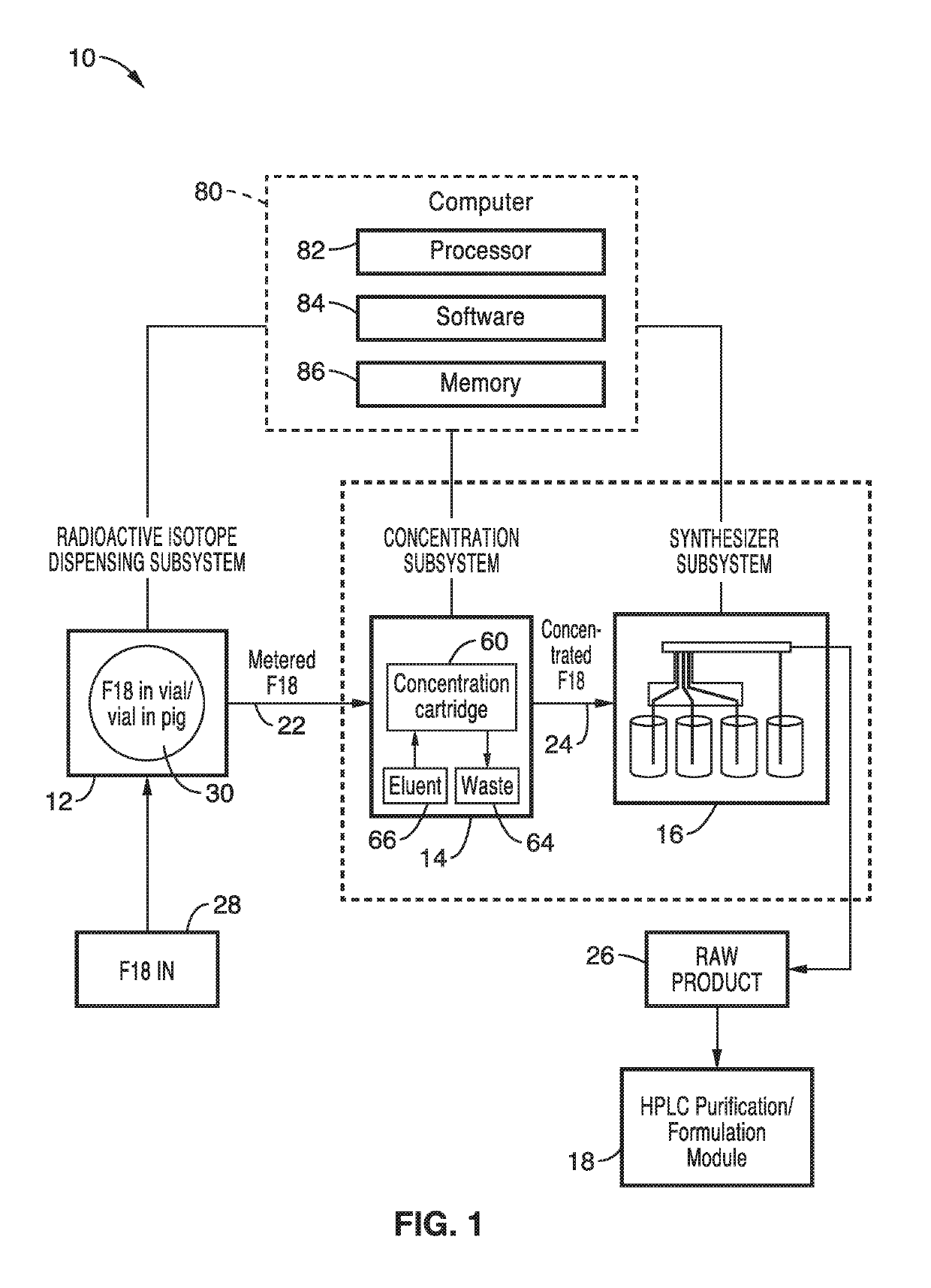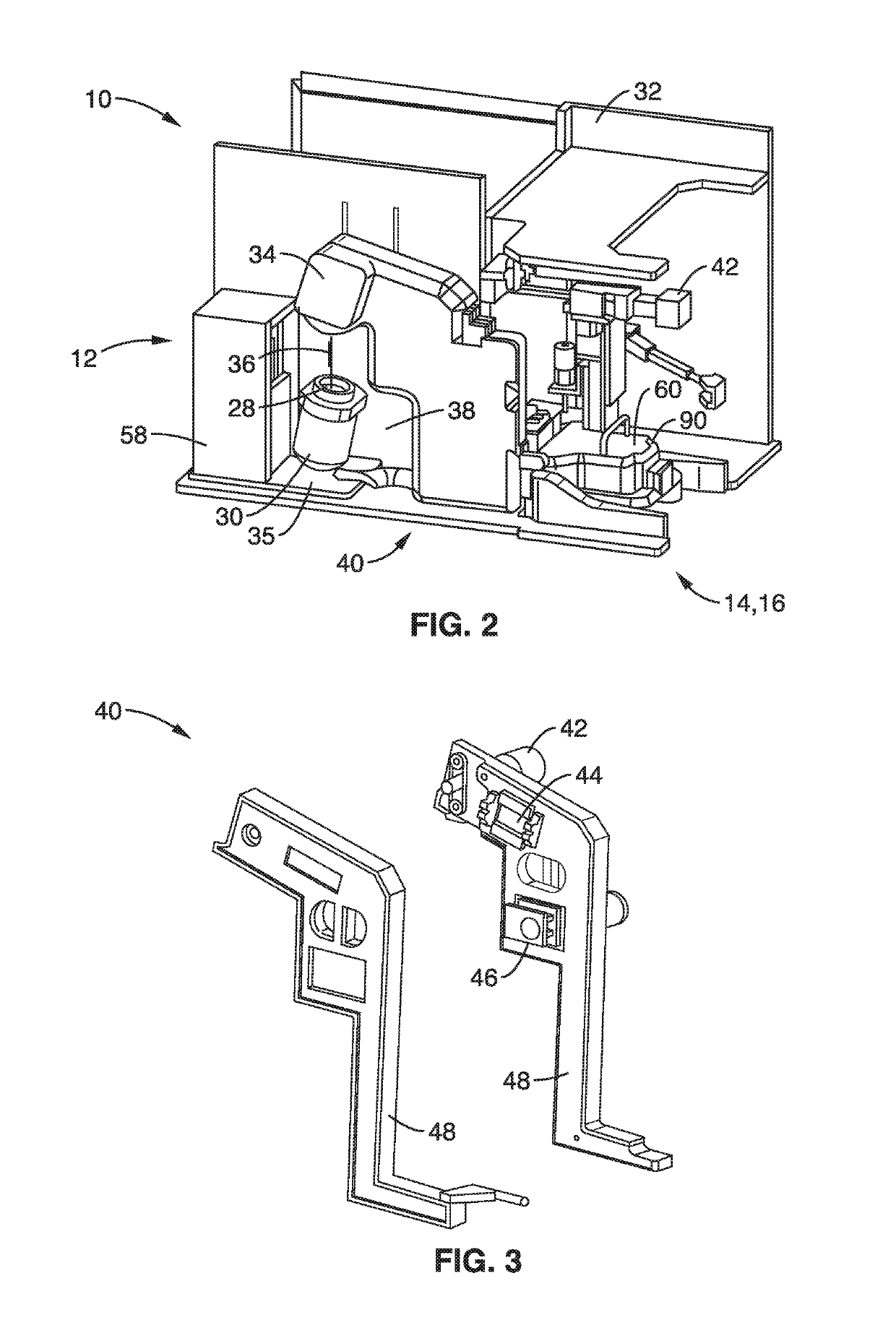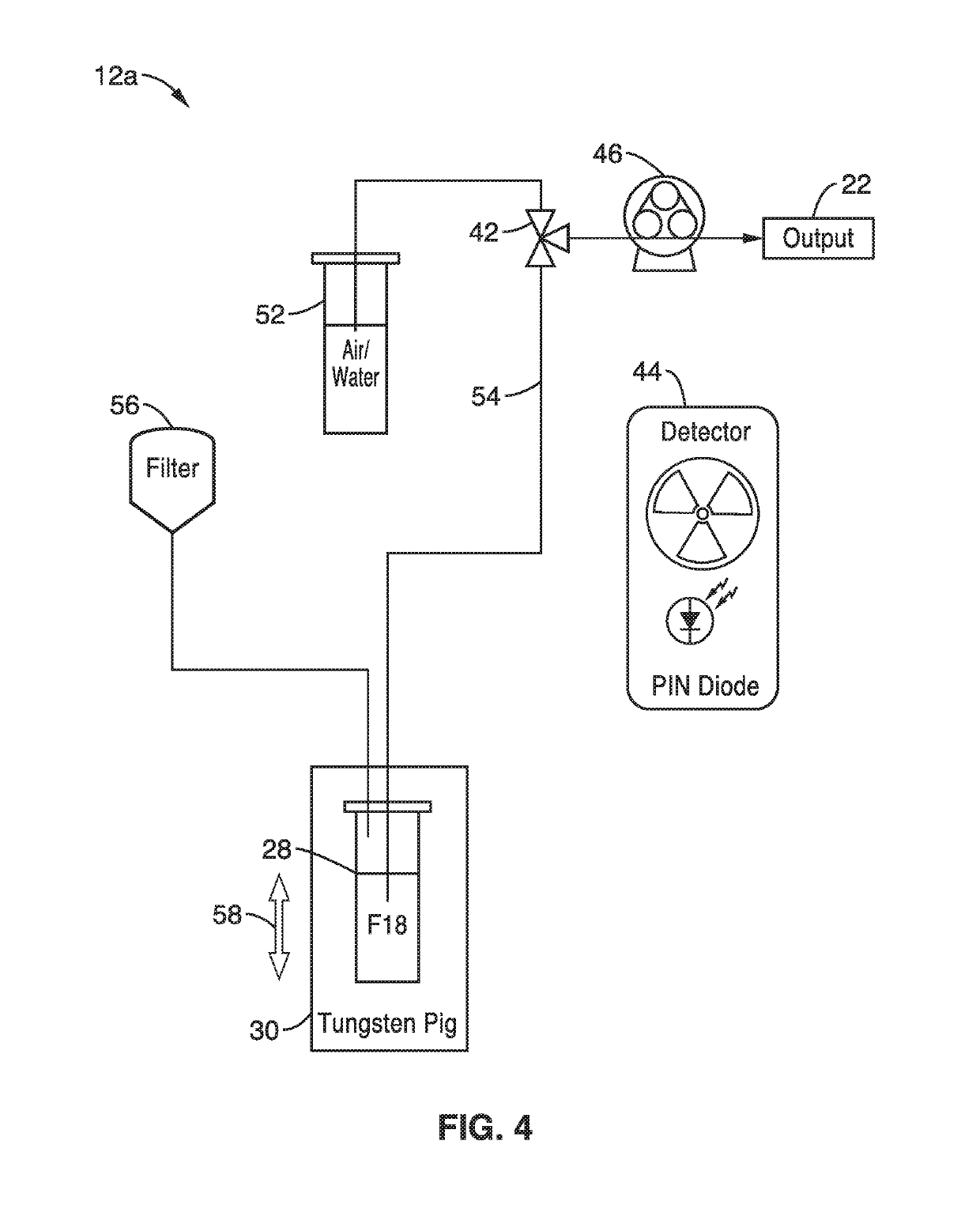Self-shielded, benchtop radio chemistry system with a plurality shielded carriers containing a disposable chip cassette
a radiochemistry system and cassette technology, applied in the field of self-shielded, benchtop radiochemistry systems for 3d imaging, can solve the problems of high cost of pet probe production, limited capacity and expertise, and limited access to 3,000 known probes, and achieve the effect of low overall cos
- Summary
- Abstract
- Description
- Claims
- Application Information
AI Technical Summary
Benefits of technology
Problems solved by technology
Method used
Image
Examples
first embodiment
[0085]FIG. 8 illustrates a schematic view of a synthesizer subsystem 16a using gravity and pressure delivery. In this embodiment, liquid 126 is delivered to the EWOD chip 92 from sealed reservoirs through vertical tubing, using pressurized gas 140 to pump liquid towards the chip 92. EWOD force is used to retain the desired amount of liquid on the chip 92 and gravity to remove excess liquid from the chip back into the reservoir or vial 120.
[0086]On-demand delivery of μL volumes from 100 s of μL are accomplished as follows: reservoirs 120 in the form of reagent vials having caps 122 with septums 124 are placed vertically below the EWOD chip 92. A vertical needle 128 (“liquid needle”) is dipped into the reservoir 120 and leads up through gasket 134 to the corresponding inlet hole 136 on the bottom substrate 135 of the EWOD chip 92. A separate shorter needle 142 (“gas needle”) allows introduction of compressed gas 140 into the vial. On demand, the vial 120 is gently pressurized (control...
second embodiment
[0089]FIG. 9 illustrates a schematic view of a synthesizer subsystem 16b using peristaltic pumping on molded fluid pathways to create a simple and cheap reagent delivery. FIG. 10 shows a side view of the synthesizer subsystem 16b of FIG. 9. As shown in FIG. 9, reagent from multiple reagent reservoirs 152 is driven by peristaltic action via pumps 46 through molded fluid pathways or lines 154 to the chip 92 and reactor / manifold 98. Volumetric control can be achieved by appropriate choice of channel 154 diameter and peristaltic pump 46. Waste may also be taken from reactor 98 via a pump 46 to waste vial 64. A plurality of pinch-off mechanisms 150 may be employed to contain all reagent 152 and activity (e.g. input 24 and output 26) from backing up out of the shielding 158. After synthesis is completed, the chip 92 and shielding 158 assembly will be removed and stored to decay. All wetted paths from reagents 152 and pathways 154 may also be contained in disposable cassettes. A ribbon cab...
PUM
| Property | Measurement | Unit |
|---|---|---|
| volume | aaaaa | aaaaa |
| volumes | aaaaa | aaaaa |
| volume | aaaaa | aaaaa |
Abstract
Description
Claims
Application Information
 Login to View More
Login to View More - R&D
- Intellectual Property
- Life Sciences
- Materials
- Tech Scout
- Unparalleled Data Quality
- Higher Quality Content
- 60% Fewer Hallucinations
Browse by: Latest US Patents, China's latest patents, Technical Efficacy Thesaurus, Application Domain, Technology Topic, Popular Technical Reports.
© 2025 PatSnap. All rights reserved.Legal|Privacy policy|Modern Slavery Act Transparency Statement|Sitemap|About US| Contact US: help@patsnap.com



